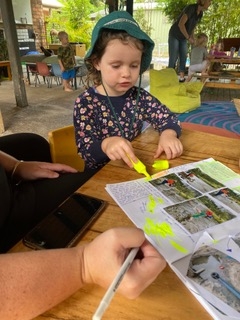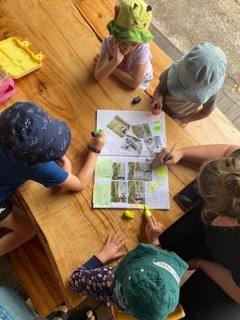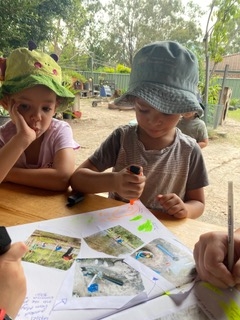“The Project Approach”
This week I would like to share something a little different with you. All of our staff members recently came together for a day of personal development. Our subject was ‘The Project Approach’. The Project Approach is essentially about engaging children’s minds, fostering their natural curiosity and helping them to become independent thinkers and learners, which aligns perfectly with our philosophy.
‘Children have a strong disposition to explore and discover. The Project Approach builds on natural curiosity, enabling children to interact, question, connect, problem-solve, communicate, reflect, and more. This kind of authentic learning extends beyond the classroom to each student’s home, community, nation, and the world. It essentially makes learning the stuff of real life and children active participants in and shapers of their worlds’, (projectapproach.org, 2014).
This day really drove home that, at the heart of it, children need uninterrupted times to play and learn, to explore and discover answers on their own. This way they are constantly building on their thinking skills, challenging themselves, building resilience and confidence in themselves as learners. Our role, as teachers, is to make sure they get those times. To make sure that there are ample resources for them to explore with, to create stimulating environments and invitations to play, and to be there if they need us. Our role is not to interrupt their play because they might have a problem that needs to be solved or we think it should be done a different way. We need to put more faith and trust in our children that they are competent beings, after all, there is no wrong way of playing!
In saying this, we have also started up our ‘project approach’ books this week. These are to document some of our learning but are very much child centred. The children have driven the interest subject, chosen the photos to go in, cut the photos out, placed them where they want and have added their own ideas to the page. As they do this, they are talking amongst themselves, sharing, questioning, predicting and hypothesising. We as teachers, will document the children’s voices, briefly outline the learning taking place and suggest possible lines for future learning. These books will be placed next to the sign-in in the Possum room for your to peruse.
So that is what I have focused on this week. It’s fascinating to just sit and take it all in and not to be in there trying to scaffold on a regular basis. And by doing this I’ve given children more agency, been able to focus more acutely on any learning taking place and have understood more clearly what the children are thinking about. From here I have been able to help extend play and learning by subtly providing different resources, by enhancing an environment or just by being able to engage in meaningful conversations. Although we do this any way, I feel more attuned to these skills now and feel that we are being even more respectful to our children. My role is to provide a play environment that is rich in learning possibilities, and of which I report on each week, but my own development is equally important, so I hope you don’t mind me writing from a different perspective this week.
This is just but a small part of what we do but I felt compelled to write about it. Enjoy the rest of your week everyone,
– Kisie.




